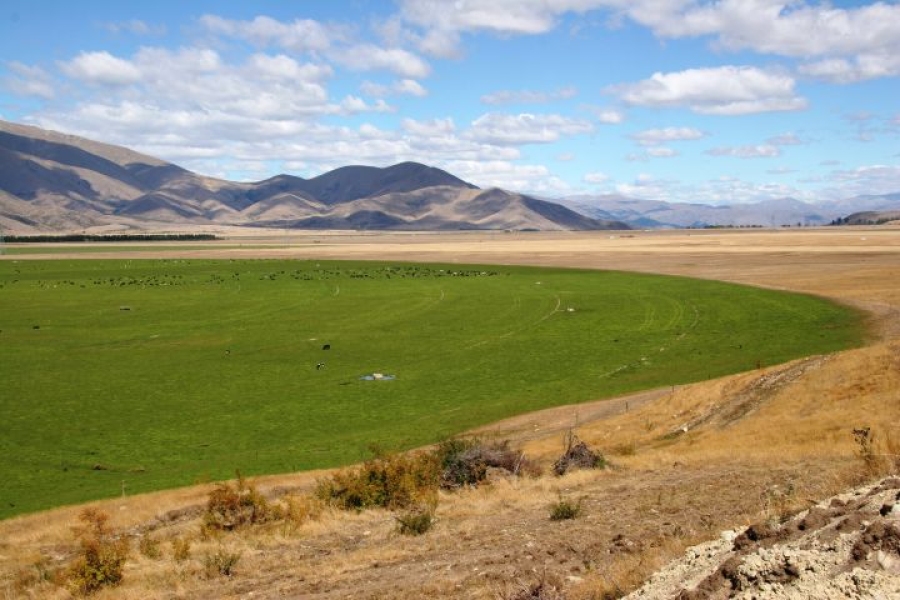The lakes of the Upper Waitaki Basin – Lakes Benmore, Aviemore, and Waitaki – are highly valued for their clean water. But land use is intensifying in the lakes’ catchments, and concerns for future water quality are growing. NIWA scientists have worked alongside Waikato University scientists to model the potential impact of intensifying land use on water quality in Lake Benmore, to help Environment Canterbury with its regional planning.
Changing times bring water-quality concerns
Historically, land use in the Upper Waitaki catchment has been low-intensity dryland sheep farming. In recent years there has been a shift to irrigation, dairying, and dairy support, and this trend looks set to continue. A key concern is that more intensive land use will result in more nitrogen and phosphorus entering the lakes. Water quality in some central North Island lakes, including Lake Taupo and the Rotorua lakes, has been seriously degraded by nutrients leaching from intensively farmed land. Restoration is proving difficult and costly. In the South Island, there is still time to establish water quality objectives and related nutrient-load limits before degradation occurs in some lakes. These limits can be built into regional plans before farmers invest in new irrigation systems and technology for managing environmental effects.
The model’s focus – Lake Benmore
Modelling focussed on Lake Benmore, the first lake in the chain downstream of the proposed irrigated areas. By protecting water quality in Lake Benmore, water quality in Lakes Aviemore and Waitaki will also be protected. The hydrodynamic-ecosystem model simulated several future intensive land-use scenarios in Lake Benmore’s two main catchments – the Ahuiriri (west) Arm, and the Haldon (north) Arm. The model showed that the Ahuriri and Haldon Arms of Lake Benmore behave differently, and should be treated differently in the regional plan. The Ahuriri Arm is more sensitive to nutrient increases, and one option is for regional planners to focus on managing land use in this catchment. “Our job was to provide information to help Environment Canterbury with resource-allocation decision making,” says NIWA water resources scientist Ned Norton. “We have provided a set of options for environmental objectives for Lake Benmore and, depending on the option chosen, provided catchment nutrient-load limits, in tonnes of nitrogen and phosphorus per year, needed to achieve the environmental objectives.” Read the full report here.
More information on some of NIWA's irrigation research.
Contact: Dr Ned Norton, NIWA.

